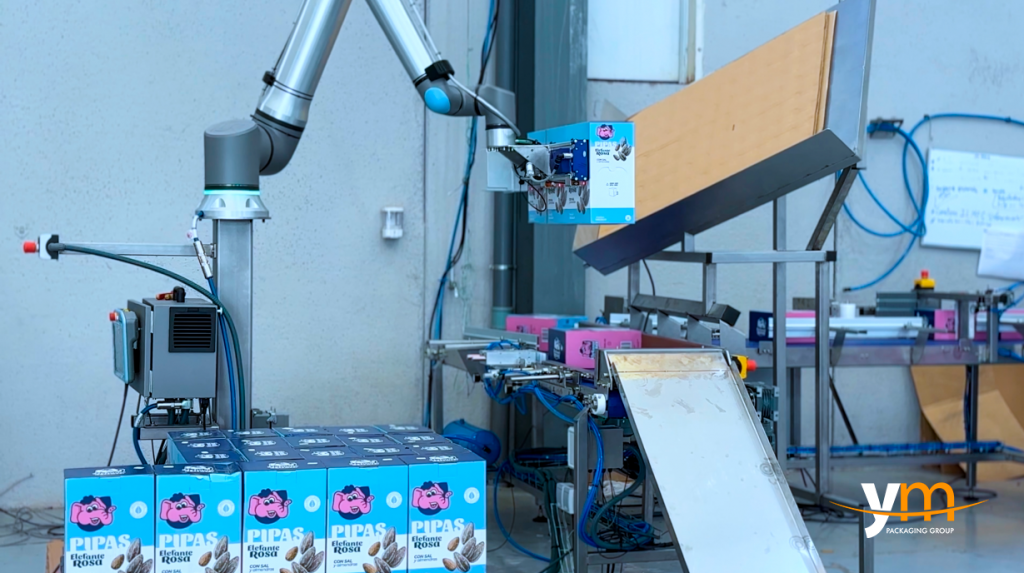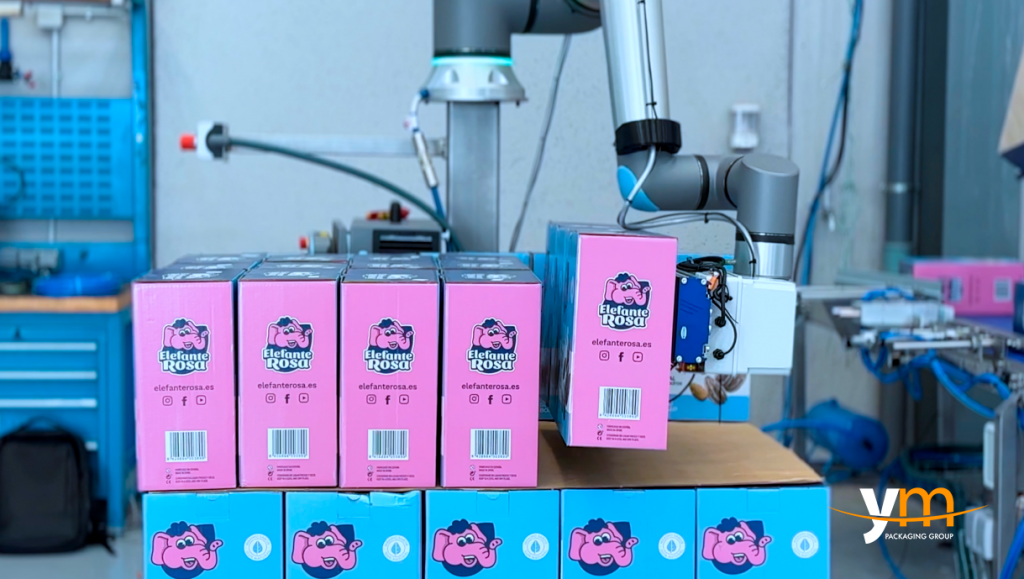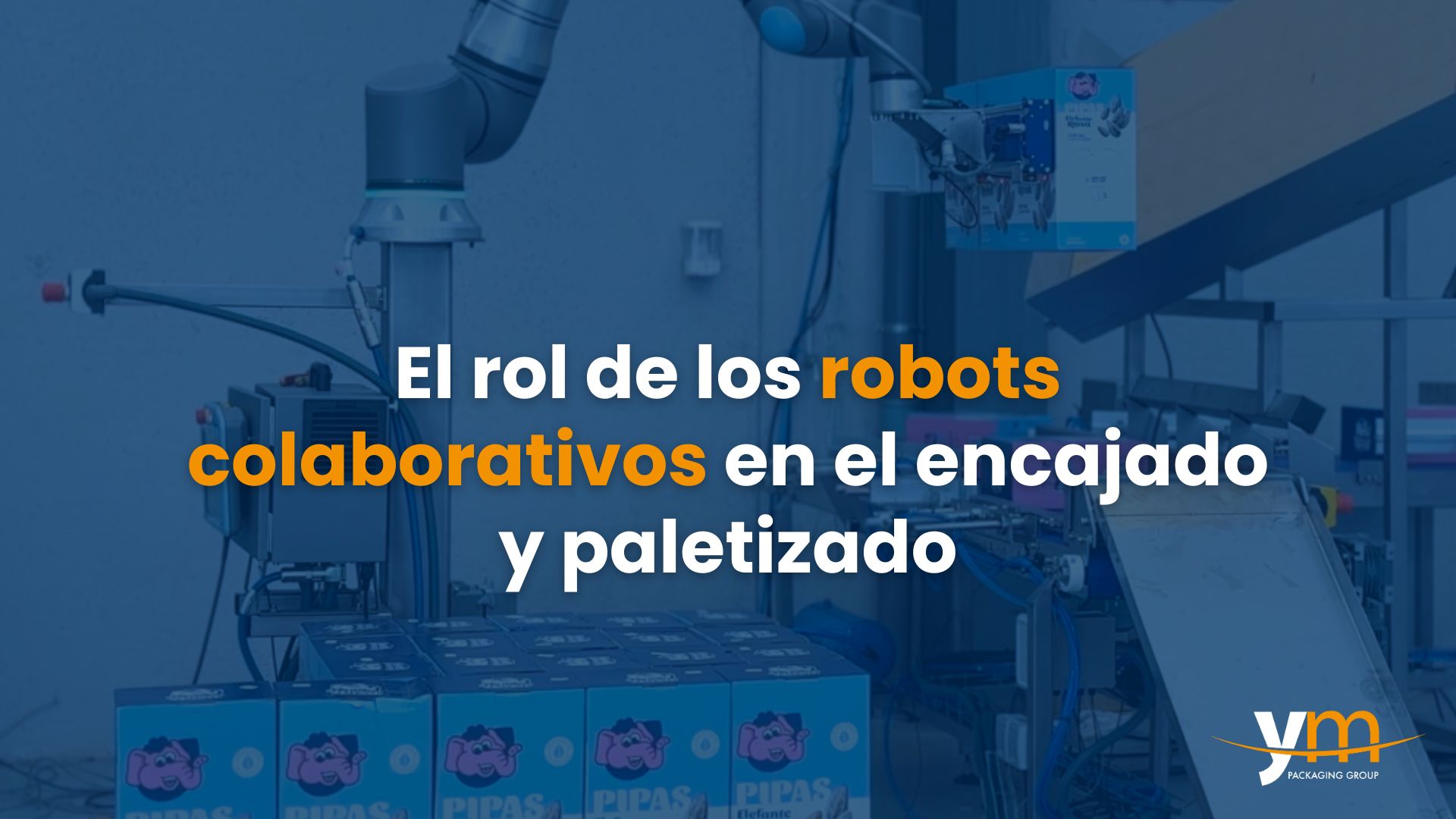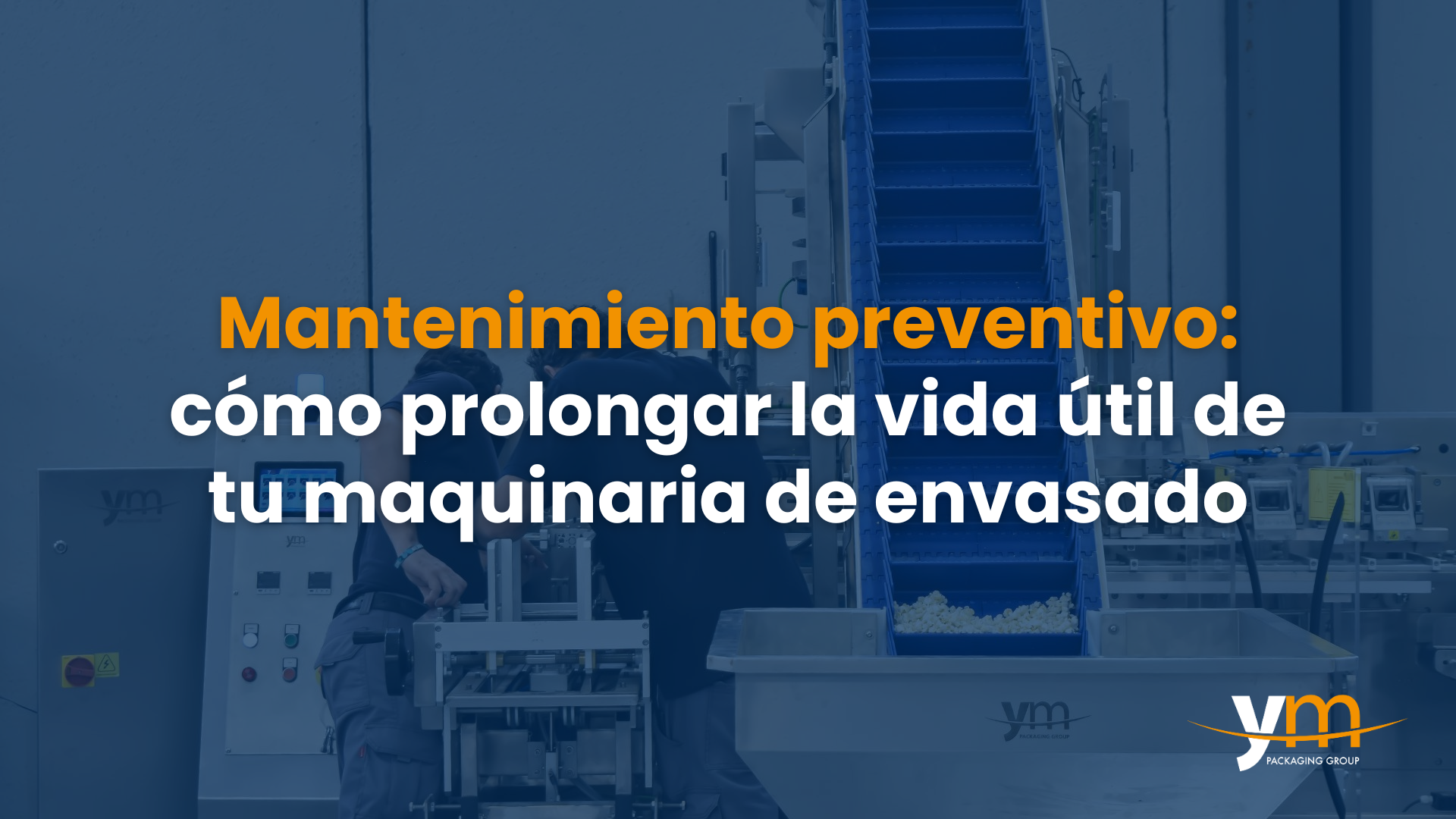The impact of collaborative robots on the end of line
In the packagingoperations, the operations of packing and palletising have taken a qualitative leap forward with the incorporation of the collaborative robots (cobots). These machines are designed to work side-by-side with operators, without the need for fences or safety cages, making them a safer, more flexible and efficient alternative to traditional industrial robots.

Key benefits of collaborative robots in case packing and palletising.
Consistent and accurate productivity.
Cobots handle boxes, crates and pallets with high accuracy, ensuring stable work cycles and reducing human error. While they take care of repetitive and heavy tasks, operators can focus on the quality control or in the supervision of the production line.
Increased job security at the end of the line.
Thanks to their state-of-the-art sensors, collaborative robots stop when they detect contact with a person, minimising risks and reducing injuries from manual handling of loads. This has a direct impact on a safer and healthier working environment.
Flexibility and easy adaptation in fitting.
A distinguishing feature is its ability to adapt quickly to different formats of boxes, palletising patterns or changes in production. Their reprogramming is agile, making them a scalable investment aligned with industry demand.

Case study: palletising boxes with a collaborative robot in the nuts and dried fruit sector.
At YM Packaging we have recently developed a project of palletising automatic for a client in the nuts and dried fruit sector. The main objective was to palletising boxes of pipes on European pallets accurately, safely and efficiently, optimising the end of line with the incorporation of an UR20 collaborative robot from Universal Robots.
The system integrates a side gripping gripper and suction plane, which ensures stable handling of the crates, preserving both the integrity of the packaging and the product. In addition, the system is equipped with crate preparation belts to ensure correct orientation, intelligent sensors for detecting falling boxes, carton level and empty pallet presence, as well as fixing brackets for double palletising stationThis increases operational productivity.
All management is centralised through a PLC with touch screenwhich makes it easy for the operator to control and monitor the process in an intuitive way. The project has been designed to work with two box formatsThe pallets are available in different sizes, weights and pallet configurations, which makes them highly versatile and adaptable to the production line.
This case study reflects how the integration of collaborative robots in case packing and palletising not only improves efficiency and safety, but also provides key flexibility to meet the challenges of today's packaging industry.
YM Packaging: innovation in case packing and palletising.
At YM Packaging we integrate collaborative robots into our case packing and palletising lines, combining automation with human talent. The result: more productive, safe and profitable processes that reinforce our customers' competitiveness in increasingly demanding markets.
And while collaborative robots are transforming the end-of-line in packaging and palletising, we cannot overlook the key role they are playing anthropomorphic robots in case packing and palletising.






